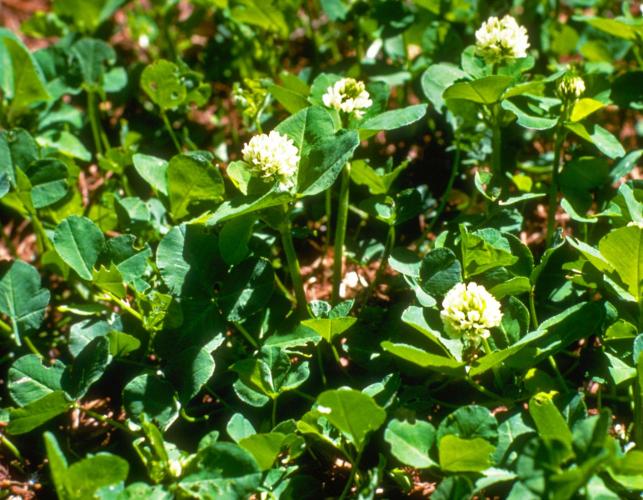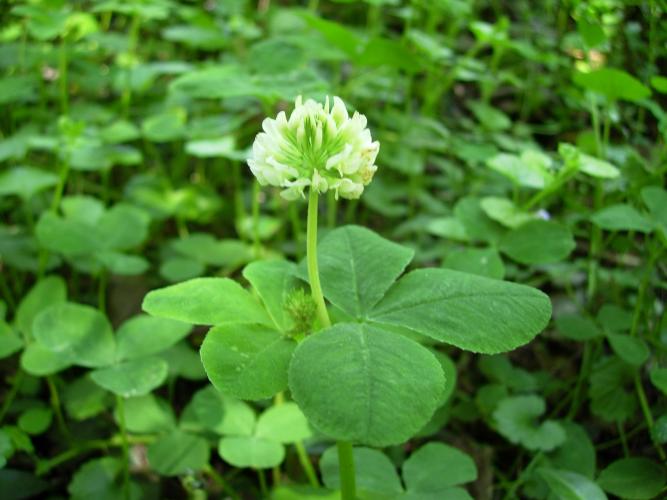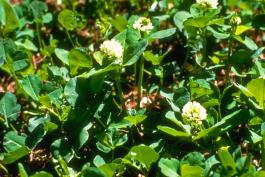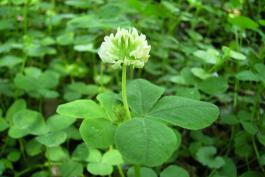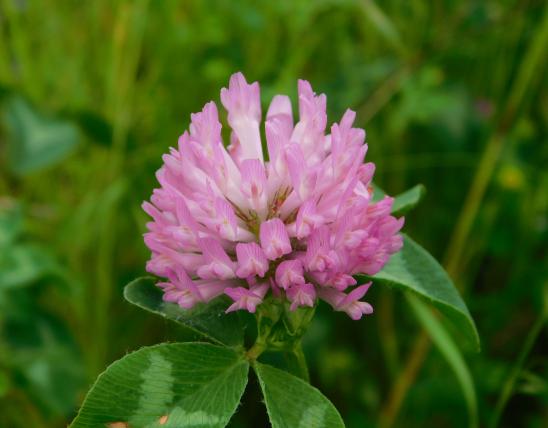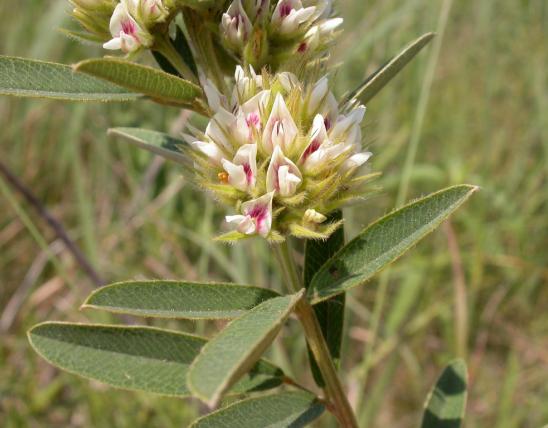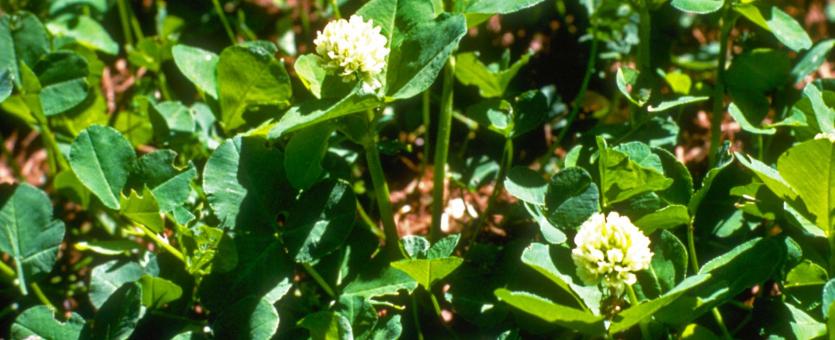
Running buffalo clover is a perennial that grows from 4 to 20 inches tall. Like other clovers, running buffalo clover has leaves divided into 3 leaflets. It sends out long creeping runners (stolons) from its base, which grow along the ground and take root. The stems and leaves are hairless. The flower heads are about 1 inch wide, white (sometimes tinged with purple), and grow on stems that are 2 to 8 inches long. Each flower head has 2 large, opposite leaves below it on the flowering stem. These leaves are typically larger than those found on stems without flowers, and the leaflets lack the two-toned patterning common on other clovers. It flowers from mid-May to June and fruits in July.
4 to 20 inches tall
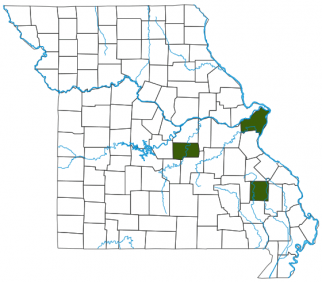
It was considered extirpated from Missouri until as recently as 1989, when some plants were reported growing in an unattended pile of topsoil in St. Louis. One natural site for running buffalo clover was discovered in Madison County in 1994 and another was discovered in Maries County in 1998.
Habitat and Conservation
Open woodlands, savannas, grasslands, streambanks, floodplains, and shoals. Apparently this plant used to be quite widespread in our rich Midwestern soils, flourishing in open areas kept open by the grazing of bison. Reintroduction of running buffalo clover may aid the recovery of this species in Missouri. Experimental plantings in Missouri began in 1990. Since 1990, 23 plantings have been established on Missouri Department of Conservation lands and nine on U.S. Forest Service lands.
Status
State endangered. Once widespread in the Midwest, this species declined drastically. It depended on bison to maintain its habitat and to disperse its seeds. Agriculture and other land-clearing has destroyed and fragmented its habitat. Nonnative species outcompete it for nutrients, space, moisture, and sunlight. Land management that permits open areas to become wooded, plus excessive grazing, also decreases this plant's chances for survival.
By the early 1980s, running buffalo clover was thought to be nearly extinct. It was listed as a federally endangered species by the U.S. Fish and Wildlife Service in 1987. Since then, public and private conservation efforts have been successful in locating and protecting surviving populations and restoring the species to stable levels. In August 2021, it was taken off the endangered species list.
Human Connections
To many, this clover might seem no different than the introduced Eurasian clover that invades suburban lawns. But this clover has profound historical significance, for it was a common sight to westward pioneers and settlers and to the Native Americans who, like this plant, coexisted with the bison.
Ecosystem Connections
This plant is a remnant of ecosystems that were maintained by the grazing of buffalo, and in its day served as important fodder for those large animals.
